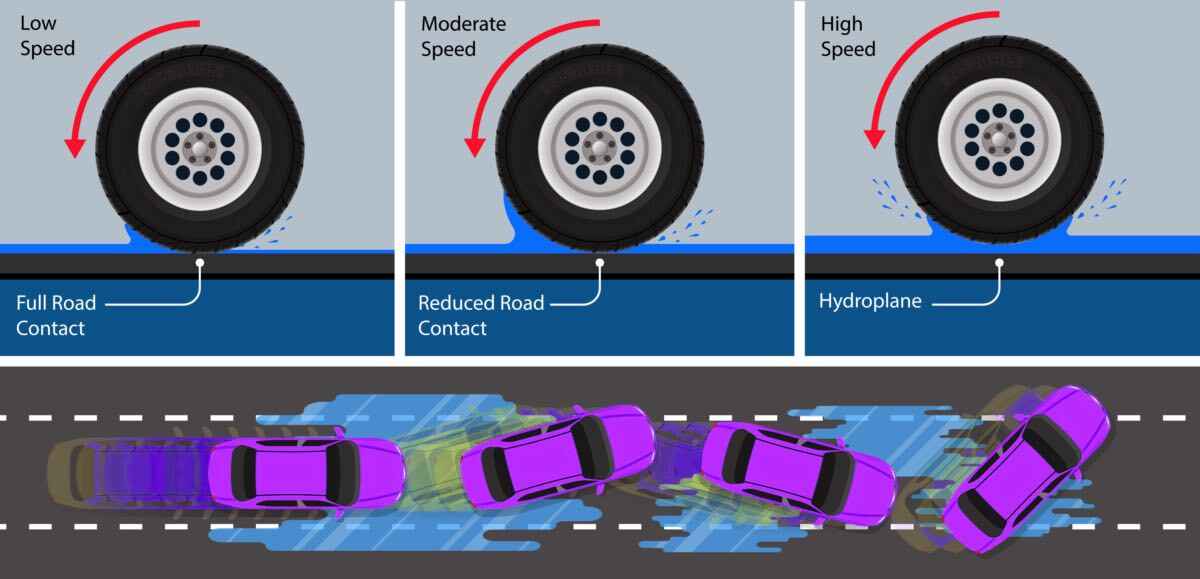Why Lahore Bike Lane Turns Slippery in Rain? – Explained
The newly constructed bike lane on Ferozepur Road, Lahore, intended to streamline traffic and improve rider safety, has become a potential hazard in wet conditions. Riders report that even light braking causes tires to skid, mimicking the slipperiness of a snow-covered road. Below, we dissect the science behind this dangerous flaw.
![]() Paint’s Low Frictional Value
Paint’s Low Frictional Value
Road grip hinges on microtexture (tiny surface roughness) and macrotexture (larger grooves) to channel water away and maintain tire contact. High-quality motorcycle lane paints embed anti-skid aggregates like crushed quartz, aluminum oxide, or polymer grit to create friction.
However, if Ferozepur Road’s green paint is a low-cost acrylic or water-based variant, it likely lacks these additives. The result is a smooth, glass-like surface. When rainwater coats this layer, it reduces the coefficient of friction (μ) to as low as 0.2–0.3 (similar to wet ice), compared to 0.5–0.7 for properly textured asphalt. This turns braking into a gamble: even half-pressure on the pedal overcomes traction, triggering skids.
Hydrodynamic Trapping

Motorcycle lanes require a 1–2% cross slope to drain water toward gutters. The problem with the bike lane is that it’s built on the side of the road, and both sides are covered with concrete blocks. It means that rainwater can’t escape that lane for a long time.
The degraded paint makes it worse by acting as a waterproof membrane, trapping a thin layer of water between tires and the road. At speeds above 30 km/h, this creates hydroplaning—a phenomenon where tires lose contact with the road and “float” on water. Unlike cars, motorcycles have only two thin contact patches, making hydroplaning catastrophic.
Low-Quality Paint
Durable road paints fuse chemically with asphalt pores. Cheap paints, however, form a superficial film. When rainwater seeps into microscopic gaps between the paint and asphalt, it weakens adhesion through hydraulic pressure. As the paint peels, it exposes uneven patches of bare asphalt and flaking edges.
These create differential friction zones: tires abruptly transition from high friction (exposed asphalt) to near-zero friction (painted areas), destabilizing the bike. The uneven grip on the lane explains why skids feel sudden and uncontrollable.
Material Degradation
Low-quality paints degrade under tire friction. Constant traffic “polishes” the surface, smoothing it further. Rainwater then mixes with loosened paint particles, forming a lubricating slurry that fills the asphalt’s natural grooves. Over time, the lane becomes uniformly slick, akin to a wet ceramic tile.
This sludge also reduces hysteresis—the energy loss between tire rubber and the road that generates grip. Without hysteresis, tires cannot “bite” into the surface, even with advanced ABS systems.
Thermal Expansion and UV Damage

Lahore’s climate amplifies the problem. Daily temperature swings cause thermal cycling, where materials expand and contract. Cheap paints lack elasticizers (polymers that absorb stress), leading to cracks. UV radiation further degrades binders, making the paint brittle. Rain infiltrates these cracks, and during colder hours, water freezes and widens them (freeze-thaw cycling). The result is a fractured surface that traps water and accelerates paint erosion.
What is your experience with the bike lane paint in Lahore? Share your experience with us in the comments section.


 Paint’s Low Frictional Value
Paint’s Low Frictional Value 